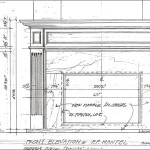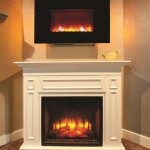How to Build an Outdoor Fireplace: A Comprehensive Guide
Building an outdoor fireplace is a rewarding project that can significantly enhance the ambiance and functionality of a backyard. It transforms an outdoor space into a cozy gathering area, extending its usability into cooler months. A well-constructed outdoor fireplace not only provides warmth but also serves as an aesthetic focal point, increasing property value and creating a welcoming atmosphere for friends and family. This guide details the process of building an outdoor fireplace, covering critical aspects from planning and design to construction techniques and safety considerations. It emphasizes the importance of adhering to local building codes and obtaining necessary permits before commencing any construction work.
Before embarking on the physical construction, comprehensive planning is essential to ensure a structurally sound and aesthetically pleasing fireplace. This stage involves defining design preferences, selecting suitable materials, and securing the necessary approvals. A thorough understanding of site conditions and local regulations is also crucial for a successful project.
Planning and Design Considerations
The initial phase of building an outdoor fireplace involves careful consideration of various factors that will influence the overall design and functionality. These considerations encompass aesthetic preferences, site suitability, material selection, and regulatory compliance.
First, define the desired style and size of the fireplace. Consider architectural elements that complement the existing house and landscaping. Options range from rustic stone fireplaces to modern brick structures. The size of the fireplace should be proportionate to the available space and the intended use. A large fireplace may dominate a small backyard, while a small fireplace might be insufficient for a large gathering area. Sketches and scale drawings can aid visualization and facilitate accurate material estimation.
Next, evaluate the site's suitability. The location should be a safe distance from combustible materials, such as trees, fences, and overhanging structures. Prevailing wind direction should be considered to minimize smoke drifting into the house or neighboring properties. The ground must be level and capable of supporting the weight of the fireplace. A concrete foundation is typically required to provide a stable base. Soil testing may be necessary to determine the load-bearing capacity of the ground.
Material selection is another crucial aspect of the planning phase. Common materials include bricks, concrete blocks, natural stone, and firebricks. Bricks and concrete blocks are readily available and relatively inexpensive, while natural stone offers a more rustic and aesthetic appeal. Firebricks are essential for the firebox, as they can withstand high temperatures. The selection of materials should align with the desired style, budget, and local availability. It is imperative to choose materials rated for outdoor use, ensuring resistance to weathering and temperature fluctuations.
Finally, research and comply with local building codes and regulations. Many municipalities require permits for outdoor fireplaces. These regulations may specify setback distances from property lines, chimney height restrictions, and fire safety requirements. Consult the local building department to obtain the necessary permits and ensure that the fireplace design complies with all applicable codes. Failure to comply with regulations can result in fines and costly rework.
Construction Techniques and Materials
The construction of an outdoor fireplace involves a systematic process, beginning with the foundation and culminating in the installation of the chimney. Proper construction techniques and high-quality materials are essential for ensuring the fireplace's structural integrity and longevity.
The foundation is the critical base upon which the entire fireplace rests. It is typically constructed from reinforced concrete, providing a stable and level platform. The dimensions of the foundation should extend beyond the footprint of the fireplace to distribute the weight evenly. Excavate the site to the required depth, considering the frost line in cold climates to prevent heaving. Pour a concrete slab of sufficient thickness, typically 4-6 inches, and reinforce it with rebar. Allow the concrete to cure completely before proceeding with the next stage.
Once the foundation has cured, begin laying the first course of blocks or bricks. Use a level to ensure that each course is perfectly horizontal. The mortar joints should be consistent in width and properly filled to create a strong bond between the units. Stagger the joints in each course to increase structural stability. As the walls rise, incorporate any desired design features, such as arches or decorative elements. Regularly check the plumbness of the walls to ensure they are vertical.
The firebox is the heart of the fireplace and must be constructed with fire-resistant materials. Firebricks are specifically designed to withstand the extreme temperatures generated by a fire. Line the interior of the firebox with firebricks, using fireclay mortar to create heat-resistant joints. The firebox should be sized appropriately for the intended use, providing ample space for firewood and airflow. A damper can be installed above the firebox to control the draft and prevent smoke from entering the house when the fireplace is not in use.
The chimney is responsible for venting smoke and combustion gases away from the fireplace. It must be constructed to the correct height to ensure proper draft. The chimney should extend at least two feet above the highest point of the roof within a ten-foot radius. Line the chimney with a flue liner to protect the surrounding masonry from heat and corrosive gases. The flue liner should be compatible with the type of fuel being burned. A chimney cap can be installed to prevent rain, snow, and debris from entering the chimney.
Safety Considerations and Best Practices
Safety is paramount when building and using an outdoor fireplace. It is essential to adhere to fire safety guidelines and implement measures to prevent accidents and property damage. Proper construction techniques, regular maintenance, and responsible usage are crucial for ensuring a safe and enjoyable experience.
Maintain a safe distance between the fireplace and combustible materials. Clear a ten-foot radius around the fireplace of any flammable items, such as dry leaves, branches, and furniture. Never use flammable liquids to start a fire. Instead, use kindling or fire starters specifically designed for fireplaces. Keep a fire extinguisher or a bucket of water nearby in case of emergencies.
Regularly inspect and maintain the fireplace. Check the chimney for cracks, blockages, or deterioration. Clean the chimney annually to remove creosote buildup, which can cause chimney fires. Inspect the firebox for cracks or damage and repair them promptly. Ensure that the damper is functioning properly and that the chimney cap is in good condition.
Supervise the fireplace when it is in use. Never leave a fire unattended. Keep children and pets at a safe distance from the fireplace. Be aware of wind conditions, as strong winds can cause sparks to spread. Extinguish the fire completely before leaving the area. Use a shovel to spread out the embers and douse them with water.
Consider the environmental impact of burning wood. Wood smoke contains pollutants that can affect air quality and human health. Burn only dry, seasoned wood to reduce smoke emissions. Avoid burning treated wood, painted wood, or other materials that can release harmful toxins. Comply with local regulations regarding open burning and air quality.
Finally, consider incorporating additional safety features into the fireplace design. Install a spark arrester on top of the chimney to prevent sparks from escaping. Build a raised hearth to protect the surrounding area from heat. Provide adequate ventilation to prevent carbon monoxide buildup. By implementing these safety measures, users can minimize the risk of accidents and enjoy the warmth and ambiance of an outdoor fireplace responsibly.

How To Build An Outdoor Fireplace Today S Creative Life

Cabins Book A Guide To Building Your Own Nature Retreat Outdoor Fireplace Plans Designs

How To Build An Outdoor Fireplace Today S Creative Life

Stonetutorials Living Stone Masonry

How To Build An Outdoor Fireplace Today S Creative Life

How To Build An Outdoor Fireplace Today S Creative Life

Book Of Successful Fireplaces And How To Build Them Donley Outdoor Fireplace Plans Books

Stonetutorials Living Stone Masonry

How To Build An Outdoor Fireplace Today S Creative Life
:max_bytes(150000):strip_icc()/milkpaint-286c9ee63b604ca1aaecac5233c8a3f3.jpg?strip=all)
10 Free Outdoor Fireplace Construction Plans








